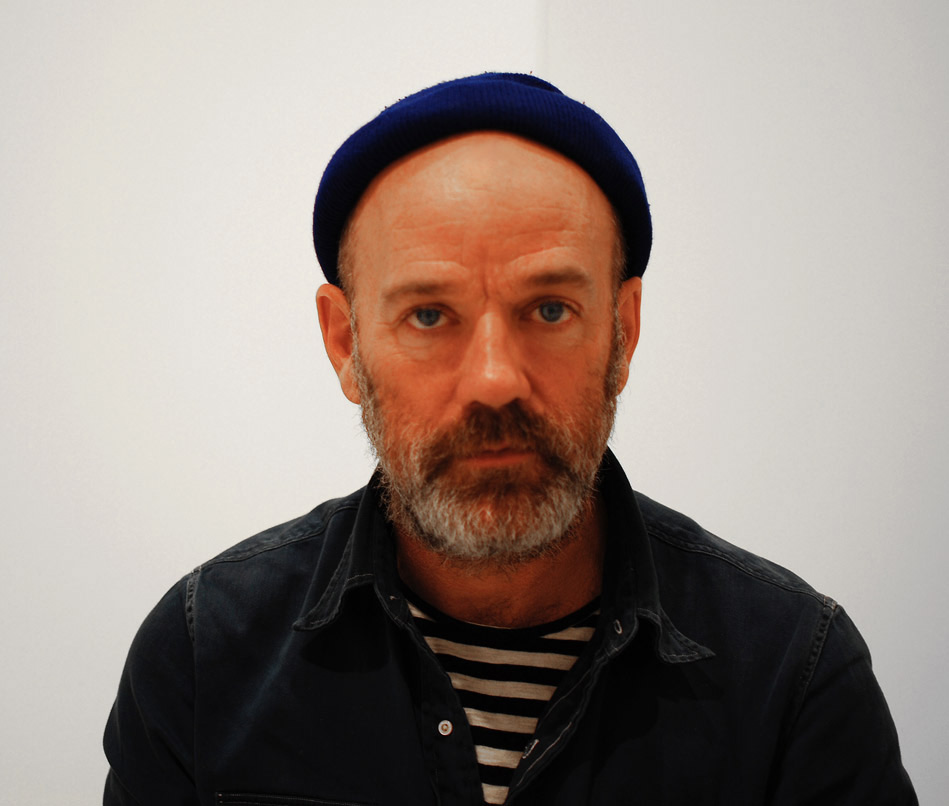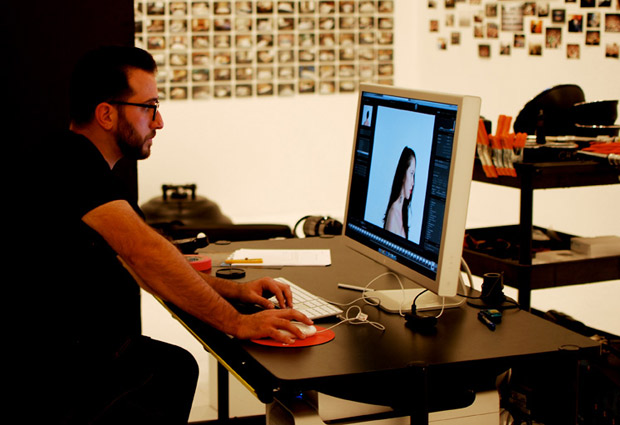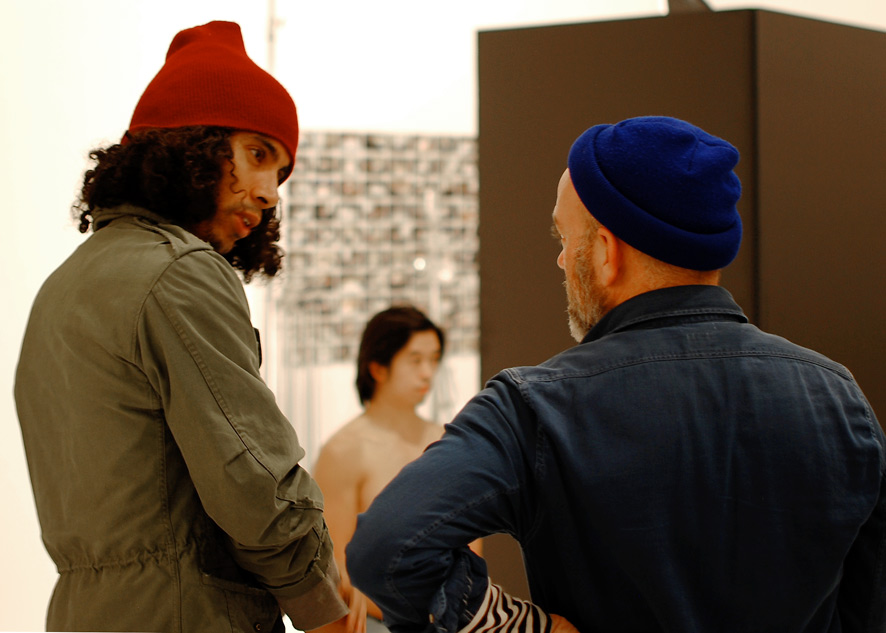An Interview with Michael Stipe
We sit down with R.E.M.’s frontman to learn about his latest creative initiative


When we found out that Michael Stipe was visiting Levi’s photo workshop in NYC to conduct a project of his own last Friday, we of course headed down to learn more. There within the tall white walls of the former gallery, dozens of young creative types lined up, all anxiously awaiting their brush with one of American music’s greats. As participants full of awe and admiration reached the front of the line, 7-inches and ‘zines piled up next to Stipe, who quietly greeted each person, explaining how they would take the next photo before sitting for the following one. After the last subject shuffled through, we sat down with the man whose career spans musician, filmmaker and artist to learn more about what brought him there, his thoughts on brand collaborations and karaoke.
What inspired you about the space initially?
It’s got a great provenance in that most New Yorkers know it as Deitch Projects, so some of the creative stuff that’s happened in this particular space is pretty legendary and this is a pretty awesome follow-up. It’s a very different thing, but I like the openness of it. I guess Levi’s is paying for it, but I think it’s really cool—whoever had the idea to do it.


For our generation, working with brands was really problematic, no one wanted to be a sellout. But more and more that seems to be just what’s happening, do you still have a choice?
I think you do have a choice and my band R.E.M. for instance, have never accepted any endorsement for any purpose that was not artistic. So the line that we draw is a fine line, but anything that is an artform or anything that is artistic or creative, like a film or TV show or some collaboration that makes sense, we’re okay with lending or allowing our music to be used, or our name to be used for something like that as opposed to having a tour sponsored by a brand.
Obviously, this is somewhere in that gray area and that’s part of what makes it a little bit interesting. It’s responding to the needs of the market in the 21st century, but it happens to be a very cool company that’s doing it and it seems fairly no-strings-attached. So I’m happy to participate.
How did the space lead to what you’re doing here?
This thing? This very simply is a response to a moment in time. In 2010 we find ourselves in—it’s not a DMZ, it’s not a no man’s land—it’s like a middle space between what is still photography and what is a moving image. Technology has advanced to the point now that the most recent professional cameras actually don’t take still images as much they take short films and then you find the frame that you want to be a still image.
I think that 10 or 12 years from now that is going to radically alter the way we think about what a still image is. And so what we did today is something that goes back to the very beginning of moving imagery with Eadweard Muybridge of course. It takes this very simple idea of a still image and animates it simply. In our case, we’re putting it through a Mac and doing a repetitive action that’s easy to understand.

How did you choose the subjects?
I just wanted it to feel really democratic, kind of like the space. And I didn’t want to do anything myself, I didn’t really want to own it. I’m happy to own the idea or to have participated in the idea, but I didn’t feel the need to take a picture or be one of the participants in the piece itself.
I like how in a way it’s a little bit like a self-portrait daisy chain. I think that term has good and then very sexual connotations, it doesn’t have to have sexual connotations! If there’s a bad connotation, please strike that remark. Your image is being taken quite democratically by the next person in line, who takes the next person in line.
As an artist I’m thinking about and dealing right now in sculpture with the bust in history. I’m not certain that there’s a 21st-century response to what a bust is as a sculptural thing.

What is the historical significance of the bust that inspires you?
Before photography and moving film there were more limited ways in which to capture someone’s likeness. In the case of world leaders, death masks were made—or life masks, in the case of William Blake. I’ve seen a copy that Patti Smith took and made into her version of a 21st-century bust.
This would be in a way, research for me on my version of a 21st-century bust. I’m actually coming away from this with this feeding the other work I’m doing outside of music. This is an idea at the moment. The only sculptures that people know of mine are actually quite limited. There are no busts, that’ll come this year.
Why bust as opposed to a portrait?
It allows me to be able to see—if I’m looking at someone—maybe they’ve got a great personality, but I’m looking at them and going, is this someone who from three dimensions would create an amazing piece that would speak beyond me or beyond my desires as an artist, but might provide comment or commentary or inspire other people who have no idea who this person was. So it’s taking something that’s quite subjective and trying to, in a very positive way, objectify it.

Do you mind telling us about your tattoo?
This was one I had done in the early ’90s, it was maybe 1993 or ’94. Now it’s a part of me, I don’t remember the original intent. I don’t think it matters.
What’s your favorite song for karaoke?
Oh, good one. ‘Justify My Love’ by Madonna. It’s so retarded, it’s spoken word so you can really have fun with it if you’ve had a few beers too many, and people respond to it well. The easy thing for me is Jimmy Webb songs, Glenn Campbell songs that he wrote because I can actually hit the notes…unless they pitch it higher or lower than my particular range.
Photos by Karen Day












